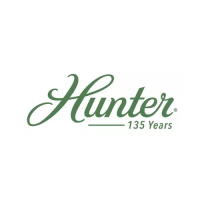nt
r
CC • En
ines and Transmissions
11.4
orrected
For in
ormation on the correct levels
or en
ine runnin
,
please consult
our en
ine owner’s manuals
rom the
n
ine manufacturer in
our owner’s packet.
Important: The Hour meter will run if you leave the ignition
switch on when the engine is not running. This unnecessarily
increases the number of engine hours.
Note: Instruments have a tolerance for accuracy. In addition,
each engine may operate at differing values at the same RPM.
As long as the instruments are reading within the proper operat-
ing range, the engine is operating properly.
1.1.4 En
ine Coolin
ere are two separate s
stems t
at coo
our en
nes.
The raw water coolin
s
stem is described in detail in
our
Water
stems”
section 9
o
this manual. The
nterna
en
ne coo
n
s
stem
s supp
e
t
e en
ne
manu
acturer. This s
stem
eatures a closed anti
reeze
oolant bottled in a reservoir attached to the en
ine.
oolant is circulated throu
h the en
ine in separate
hannels than the raw water coolin
Note: Be sure the engine seacocks are open before you start
the engine. Failure to open them will cause damage to the
water pump impeller.
DA NG ER
! !
burns or other personal in
ur
when pressure cap is
emoved. Allow en
ine to cool. Open pressure cap
slowl
to allow pressure to vent before removin
1.1.5 Emer
enc
Equipmen
Your en
ines are set up to operate under the tou
hest
on
t
ons.
owever, s
ou
t
e o
pressure
ecome
too low, or the en
ine overheat, alarms will sound at
th
h
lm. Th
r
r
v
r
l
n
iti
n
th
t will
n
an alarm and save
ou from dama
in
our en
ines.
Be sure and stud
our documentation supplied b
the
n
ine manu
acturer to ensure
ou will know what the
a
arm means s
ou
one soun
on
our
oat.
11.2 Transmission
e transm
ss
on
as a re
uct
on
ear w
c
r
ves
the propeller at a slower rotation speed than that o
the
n
ine.
onsult
our
EM manual
or complete transmission
in
rm
ti
n.
11.3 O
erations and Maintenanc
In the Underwa
Chapter,
Chapter 12
ou will find
nstruct
ons on start
n
our en
nes.
so
eta
e
n t
e
manu
acturer’s documentation supplied with
our boat,
ou will find instructions on maintenance items that
ou
ma
perform
ourself. Should
ou have an
questions
re
ardin
maintenance or operations not provided, be
sure and consult
our boat dealer.
Important: Shift the transmission only when the engine speed
is at or below 1000 rpm. Shifting at higher engine speeds could
severely damage the boat, the transmission, and the engine.
Allow the transmission to remain in neutral for a few seconds
before reversing the rotation of the propeller.
Fi
. 11.
(1)
(2)
(6)
(5)
(3)
(4)
1 – Coolant Tank (Heat Exchanger)
2 – Coolant Pump (Fresh Water)
3 – Seawater Drain from Seawater
Pump Cover
4 – Coolant Drain Cock
5 – Intercooler
6 – Seawater Drain from Seawater
Pump Cover
1.3.1 H
drolock
ro
oc
s cause
water enter
n
t
e en
ne c
n-
ders throu
h the exhaust. The
ollowin
conditions can
ause h
drolock.

